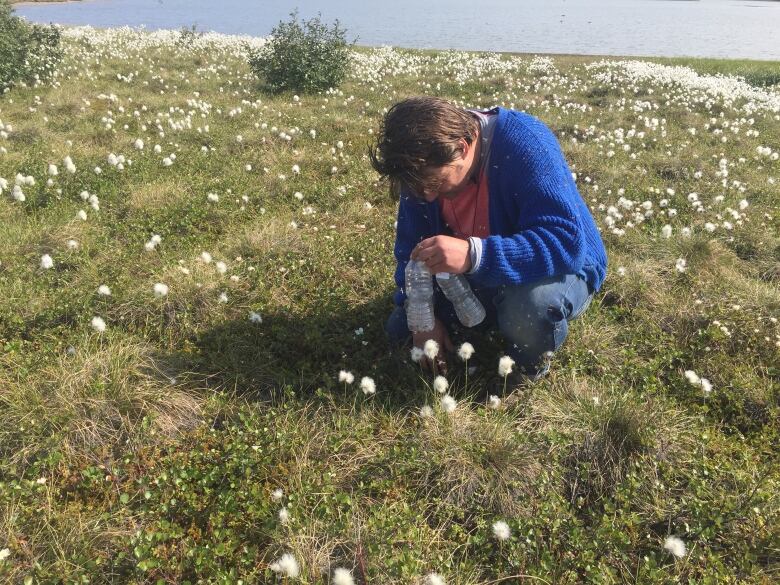B.C. baker travels to Tuktoyaktuk to make Arctic yeast
Kevin Hennig made 30 different types of yeast 'starters' from water and plants in Tuktoyaktuk

Kevin Hennig is returning home with a taste of the Arctic.
The baker from Haida Gwaii, B.C., made his way to Tuktoyaktuk, N.W.T., this past week to find the elements to make Arctic yeast.
"We are looking for things that yeast would want to eat. So the top of this grass is perfect," said Hennig, hunched over the grass at the most northern point in Tuktoyaktuk, alongside the Arctic Ocean.
Hennig, who owns Raincoast Breads in Haida Gwaii, drove north with a mission to make various types of Arctic yeast. He stopped along both the Dempster Highway and the Inuvik Tuktoyaktuk Highway to gather what he needs for the process, like grass, flowers and berries.
"I love foraging wild foods into everything I make," he said."Most people ask me what wild yeast is, where is it?People don't really think about yeast."
Yeast are a fungi, like mould and mushrooms, that feedon sugar in ingredients such as flour. Yeast turns the sugars into gases, which create bubbles and cause bread to rise. Yeast can be found on plant leaves, flowersand fruits, as well as in soil.
"The wild yeast is a wild organism that live in all different types of environments," Hennig said. "Different areas have different types of flavours."
He said this "fascinates" him.
"I love the idea of creating things out of where we live and using exactly what we have around us."

Like Tuktoyaktuk, Haida Gwaii is also a remote community, and Hennig noticed when he moved there that there was no fresh bread.
"So it was a big opportunity on the island to produce a bread product that was healthy, because there really is nothing."
Hennig first started to sell bread on buy-and-sell pages on Facebook before opening his bakery in October. He said he's known for using wild yeast instead of commercial yeast.
I love foraging wild foods into everything I make.- Kevin Hennig, owner of Raincoast Breads
Hennig says the process of making yeast isn't too complicated: he starts with a clean jar, a flour with no yeast, a bottle to collect water, and something sugary, like berries.
After everything gets mixedtogether, it begins to grow. In about two weeks, he will be able to make bread out of the yeast. Hennig will also be able to reproduce it from about 30 yeast startersthat he made in the Arctic.
He believes this could be a viable business for someone who wants to produce their own Arctic yeast, because it's no easy feat to get.
"I could give them the exact recipe on how to turn this into fantastical loaves of bread or buns pretty much anything you can think of."
Hennig is excited to start experimenting back home with the different Arctic yeasts he's gathered, and he's hopeful to return to Tuktoykatuk one day and bake bread with the hamlet's residents.












_(720p).jpg)


 OFFICIAL HD MUSIC VIDEO.jpg)
.jpg)



























































































